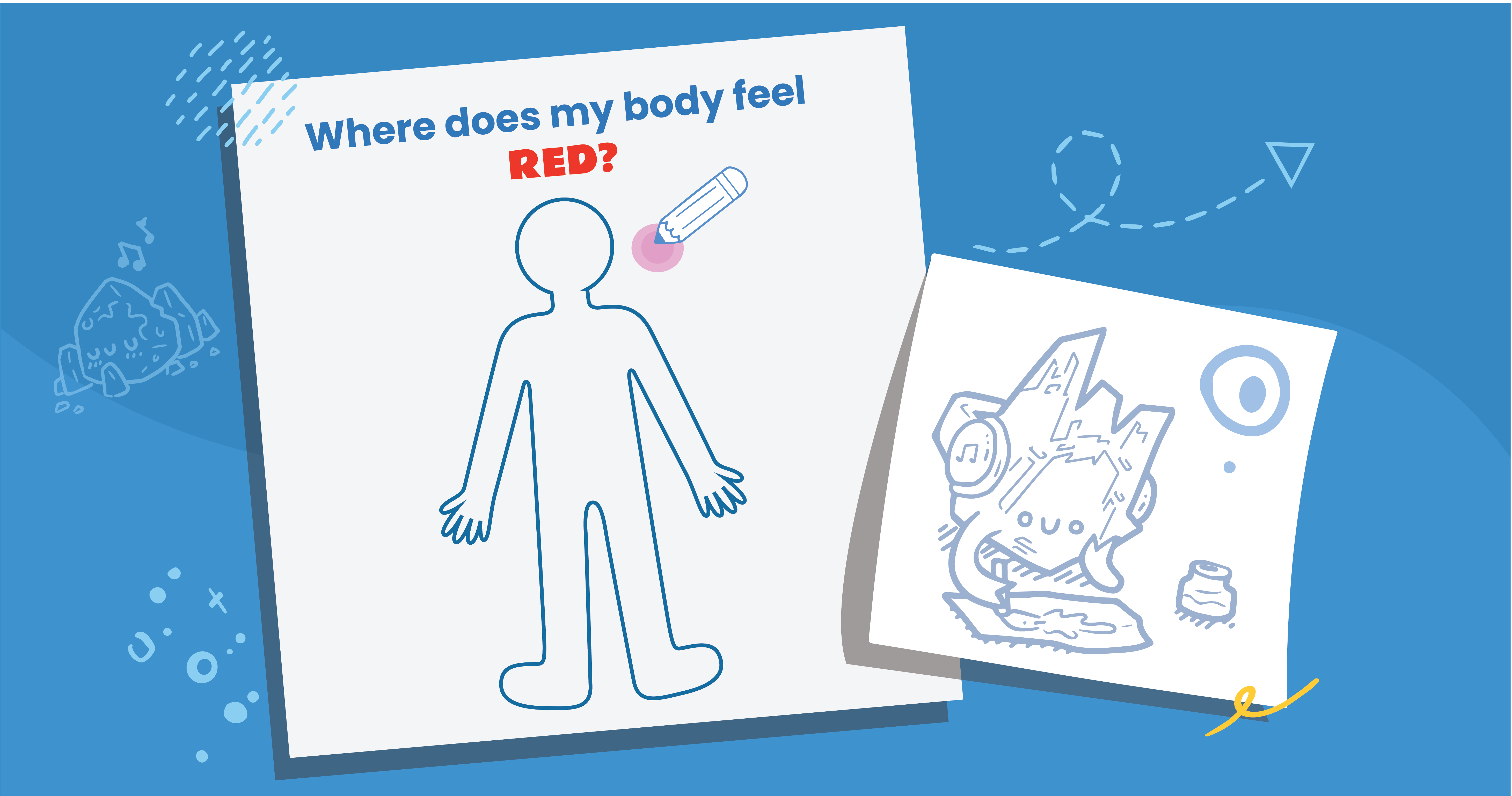
Anger is protective. When vulnerable emotions exist below the surface, anger is a strong, defensive way to keep those things hidden. It’s our brain’s instinctual way of protecting us from feeling hurt by a friend, embarrassed when we make a mistake, or guilty when we’ve wronged someone.
“When he felt angry or frustrated he would cling to those negative emotions and get caught in a vicious, escalating cycle. No amount of modeling calm or positive coping techniques seemed to work, and my own ability to remain calm in the face of frustration was being sorely tested.” – A Mightier mom
At Mightier we’re all about the power of learning through play. Our team of clinicians and game-designers take evidence-based therapeutic methods and turn them into games for kids. Here’s a list of our favorite activities for anger. Use these alongside your child to help them explore their emotions, communicate their feelings, and develop coping skills to better manage tough feelings like anger.
1. Volcano Adventure Game to Explore Anger
What does disappointment taste like? Does embarrassment have a texture? This printable activity combines crafting and gameplay, and lets you explore those underlying and more complicated emotions that so often lead to anger. It then helps kids practice communicating their feelings by letting them describe those emotions as part of the game. Cut out and build the volcano, put the anger-related emotions into the volcano, and take turns pulling emotions and describing their characteristics in a charades-like way.
2. Fishing for Feelings Game to Talk about Mixed Emotions
How does your child name their emotions? When they feel angry, do they sometimes also feel embarrassed or disappointed? When they feel worried, do they sometimes also feel overwhelmed or self-conscious? Emotions are complicated, for adults and for kids, and there’s always more going on than meets the eye. This Fishing For Feelings activity lets kids think about times they’ve felt two emotions at once. Print out the activity, cut out the emotion fish and fishing rod, and play this game as a family to help model and promote healthy emotional awareness, acceptance and communication around tough feelings like anger.
3. Body Map to Build Interoception
What does anger feel like in your cheeks? How does your stomach tell you you’re worried? Noticing and understanding these sorts of emotional body cues is called interoception, and it’s an incredibly important and foundational piece of building emotional awareness. Let your child flex their creative muscles and draw how they experience emotions in different parts of their body with this Body Map printable.
As kids begin to explore the physicality of their emotions, help them tune into signals their body sends when they are getting worked up. Noticing signals can cue kids to use one of their coping skills and cool down before anger takes over. This activity is also a wonderful way for parents to better understand their child’s anger and how they are thinking about it.
4. Guided Meditation to Help Calm
When our brain and body feel angry, sometimes we need to directly address those physical sensations and use coping skills that help us calm down. This short guided meditation script lets your child focus on the specific parts of their body where they’re noticing anger, then slowly relax those body parts to promote a sense of calm.
5. Emotional Thermometer to Identify Anger in the Moment
Emotions come in all colors and temperatures. Emotions aren’t good or bad, they are just something everyone has. Even anger, which can sometimes seem more negative, is a normal and helpful emotion. So instead of avoiding anger, help your child acknowledge it and work with it. Mightier’s Emotion Meter (or, if you’re a Mightier family, “The Gizmo”) can be a great visual representation of emotional levels and can aid your child in expressing where they are at on the scale in a moment of frustration. Emotional thermometers can help all children become more self-aware and express themselves, which leads to problem-solving. Because a verbal response isn’t needed to use this tool, it is very useful to children with limited language skills or who prefer visuals to learn.
6. Conversation Cards to Lighten the Communication Load
Anger impacts how we think, behave and how our bodies feel. Sometimes anger motivates us to make a change and shows us that we care about something, other times it can make us act in ways we regret. When we understand our anger, we can use calming strategies that prevent it from taking over. Conversation Cards about Anger by Mightier are developed to help us notice what makes us angry, and practice managing it in healthy ways. Heads up! Throughout the deck are several challenge cards that are both silly and serious. These help kids practice skills and engage with emotional topics in an experiential, playful way.
7. Mightier to Build Emotional Regulation

Intense emotions, like anger, trigger the body’s automatic fight or flight response. This makes it difficult to think clearly, communicate effectively, and remember coping skills in the moments they’re needed most. Mightier’s biofeedback videogame program is clinically validated to help children build stronger emotional regulation skills through play. For kids struggling with anger, this means greater frustration tolerance, fewer outbursts and aggressive behaviors, and a greater ability to manage and cope with difficult emotions in real life situations.
Note from Mightier Clinicians
Helping kids understand their emotions is the first step in effectively navigating more challenging experiences, such as anger. This takes practice! No marathon runner built the stamina for 26 miles overnight. And just like physical health, you have to intentionally nurture your mental health.






















